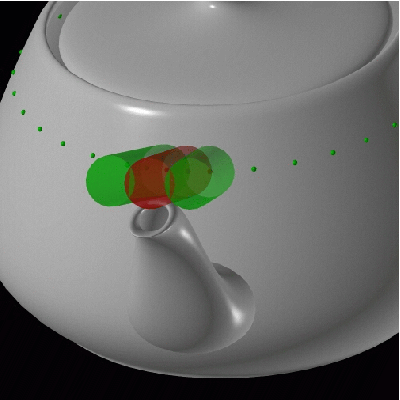
We introduce a new approach to the problem of collision detection between a rotating milling-cutter of an NC-machine and a model of a solid workpiece, as the rotating cutter continuously moves near the workpiece. Having five degrees of motion freedom, this problem is hard to solve exactly and we approximate the motion of the tool by a sequence of sub-paths of pure translations interleaved with pure rotations. The detection problem along each sub-path is then solved by using radial projection of the obstacles (the workpiece and other parts of the NC-machine) around the tool axis to obtain a collection of critical surface patches in the 3D space, and by examining planar silhouettes of these surface patches. We thus reduce the problem to successive computations of the lower envelope of a set of planar curves—this reduction is exact, and incurs no loss of accuracy. We have implemented our algorithm in the IRIT environment for solid modeling, using anextension package of the CGAL library for computing envelopes. The algorithm, combined with the proper data structures, solves the collision detection problem in a robust manner, yet it yields efficient computation times as our experiments show. Our approach yields accurate results in case of a purely translational motion, and provides guaranteed (and good) approximation bounds in case the motion includes rotations.
